The essence of Italian fashion designer Roberto Capucci can be best summed up like this: Wearing a Capucci is like riding a wild horse—you better know what you’re doing.
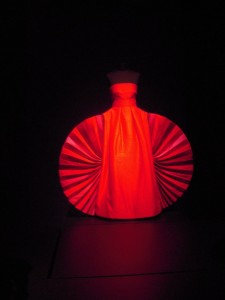
Capucci’s story is one of talent and ambition. The maverick Italian designer burst onto the competitive haute couture scene at the ripe old age of 20, did fantastically well, and then in 1980 went his own way. He chose to continue his one-of-a-kind designs, showcasing them just once a year in fashion centers like New York, Berlin and Tokyo.
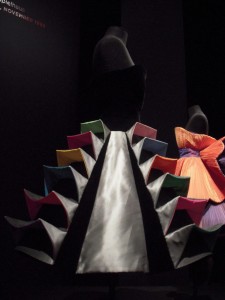
It’s finally our turn. Last month, the Art Museum unveiled the first U.S. survey of Capucci’s work, which features more than 80 pieces of clothing—some reproductions, some original—as well as drawings and sketches.
The exhibit came together “on the fast track,” says Dilys Blum, the exhibit’s curator. In a little over a year, the dresses were selected, the dramatic installation designed, the pieces photographed and the 220-page catalog completed. The clothes, which are arranged chronologically, are accompanied by a catalog with an essay (written by Blum) that provides a fascinating history of both the Italian fashion industry post-World War II and of Cappuci himself.
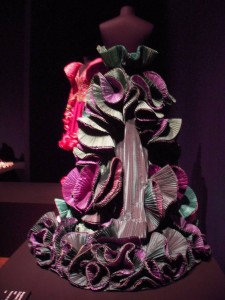
And as for those dresses: The bold colors, the baroque swirls and yards of pleated silk in Capucci’s gowns create nothing short of a parade of dazzle. Like spotlighted jewels in a darkened gallery, the gowns tell a story of an innovative artist who has never strayed from his vision. Capucci has always drawn inspiration from art, pop culture and architecture. And from color. His early works are rich in monochrome hues, but a trip to India in the 1970s opened his eyes to bright, multi-hued saris. It transformed Capucci’s palette, resulting in works with six, seven or more hues in one piece.
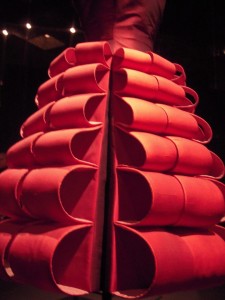
Not all of his designs are genius, but the ones that are rise up with such authority that they are simply awe-inspiring. Like the stunning black-and-white “Homage to Vasarely” (1965), a tour de force of woven silk satin ribbons. And the opulent, multi-colored “Bougainvillea” (1989).
But when the master gets literal, as he does in “Leaves” (2007), a brown silk and velvet gown with a cascade of large 3-D applique leaves, the result is more clunky than anything. “Doric Column” (1978), too, suffers from the same problem—the strapless off-white dress looks like a column but fails to capture the Capucci magic.
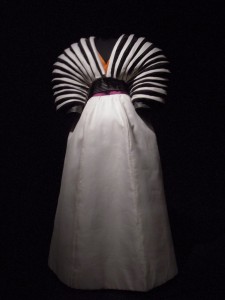
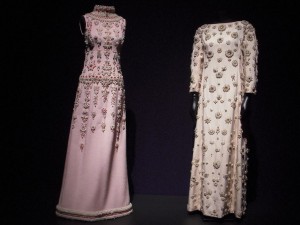
One part of the exhibit even stands out as a kind of haute couture showboating. It involves glow-in–the-dark rosary beads embroidered onto two simple and elegant sheaths (both from 1965). The story is that Capucci saw a religious procession whose participants each held a glow-in-the-dark rosary. Struck by the sight, he tracked the beads to the factory and bought enough to light up his dresses. At this exhibit, spotlights shine briefly on the two rather ordinary looking antique dresses. But when the lights switch off, the ghostly beads do their magic. It’s like indoor fireworks.
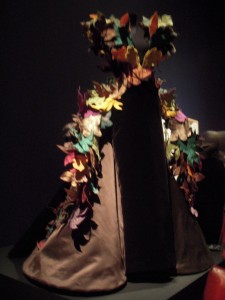
Like all blockbuster shows, this one ends in a giftshop, where, in addition to the books, clothing and bags for sale, there are two specially made items created in collaboration with the Capucci Foundation: Lithographic prints of a series of Capucci’s drawings and three 1:40 scale model Capucci dresses, sewn from the original patterns by seamstresses in Capucci’s workshop ($7,500 each).
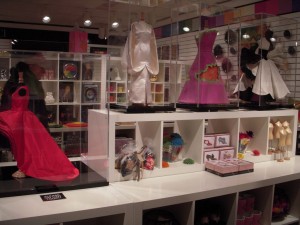
Capucci, now 80 and still creating, may have fallen below the radar in the U.S. but he has always had a cadre of clients who saw his artistry as more than the normal catwalk fare. “It’s the way the silk is crushed—it’s like he’s sculpting metal,” Blum says. So those who wear him better know what they’re doing.
Roberto Capucci: Art into Fashion
Through June 5. Philadelphia Museum of Art, Ben Franklin Parkway at 26th St. 215.763.8100. philamuseum.org
Read this at Philadelphia Weekly. More photos at flickr.









